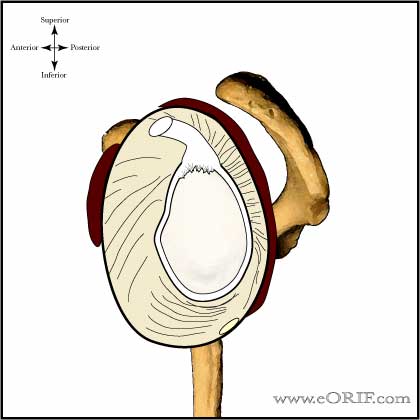 |
Type I SLAP tear
- degenerative superior labrum with fraying along the free margin.
- Treatment = debridement
|
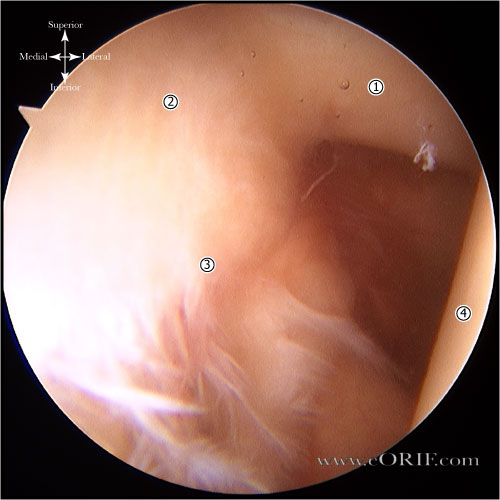 |
Type I SLAP tear
- degenerative superior labrum with fraying along the free margin.
- Treatment = debridement
|
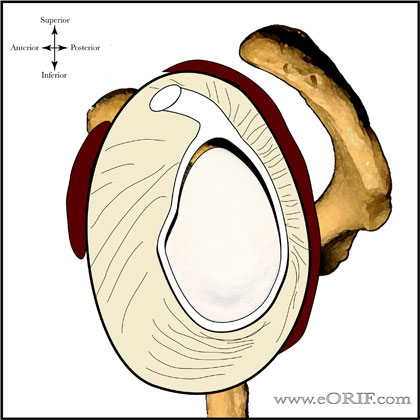 |
Type II SLAP Tear
- Superior labrum detached from the glenoid medially, leaving the superior glenoid neck uncovered for at least 5mm from the corner of the glenoid.
- There is a gap between the articular cartilage and the labral attachment to bone.
- Can be further subdivided into (A)anterior, (B)posterior, and (C)combined anterior-posterior lesions.
- Most common type of SLAP lesion.
- Treatment = 3 months of physical therapy focusing on strengthening the dynamic stabilizers.
- If non-op treatment fails to eliminate symptoms arthroscopic SLAP Repair is indicated: consider Biceps Tenodesis in low demand patients >40 years old.
- See also Biceps Labral Complex Anatomy.
|
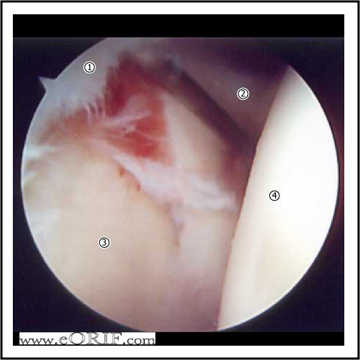 |
Type II Anterior-Posterior SLAP tear
- Biceps labral complex: Type 2 anterior/posterior tear
- Long head of Biceps Tendon
- Glenoid face
- Humeral Head
See also Biceps Labral Complex Anatomy.
|
 |
Type III SLAP Tear
- Bucket-handle tear of the superior labrum.
- Uncommon.
- Treatment = 3 months of physical therapy focusing on strengthening the dynamic stabilizers.
- If non-op treatment fails to eliminate symptoms arthroscopic biceps tenotomy with or without Biceps Tenodesis is indicated. If loose fragment is small consider debridement.
- See also Biceps Labral Complex Anatomy.
|
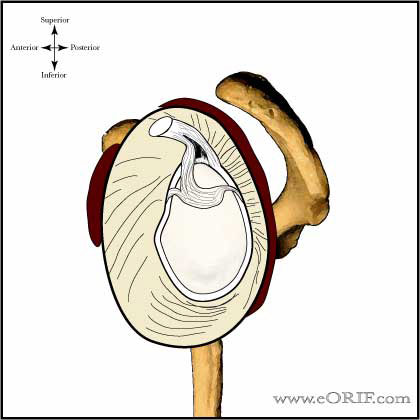 |
Type IV SLAP Tear
- Bucket-handle superior labral tear that extends into the biceps tendon.
- Very uncommon.
- Treatment = 3 months of physical therapy focusing on strengthening the dynamic stabilizers.
- If non-op treatment fails to eliminate symptoms arthroscopic biceps tenotomy with of without Biceps Tenodesis is indicated. Can consider debridement or repair.
- See also Biceps Labral Complex Anatomy.
|











